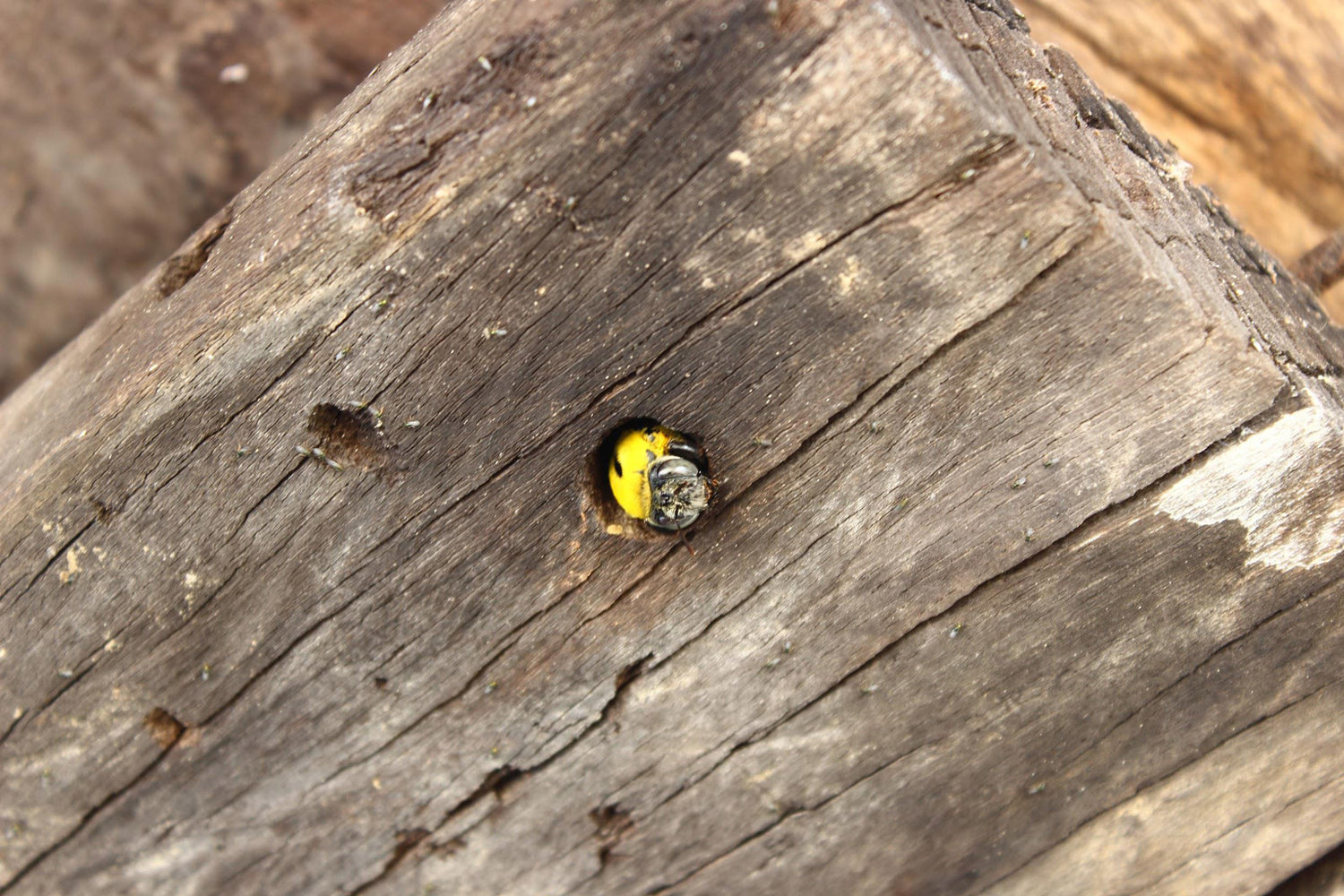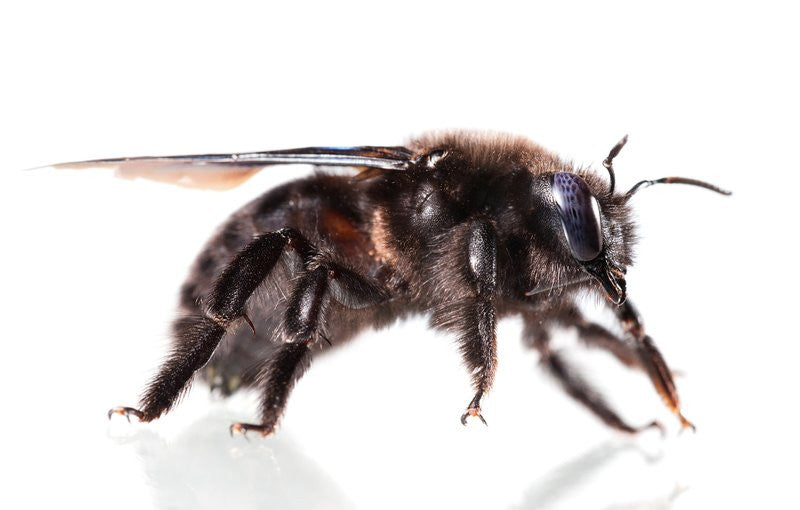
Where Do Carpenter Bees Live in Winter?
For those who are afflicted by carpenter bees, they seem to be a constant annoyance all spring and summer. But where do they go during the cold winter months? You may be surprised to learn that carpenter bees hibernate in their nests during the winter.
Carpenter Bee Winter Hibernation Habits
As spring begins, so does the life cycle of a carpenter bee. Young adult carpenter bees emerge from their hibernation ready to mate, and create a new nest all their own – this is the best time to hang your carpenter bee trap! You will start looking for these wood boring bees when the temperature starts to rise in your area (around 70° degrees). By the end of spring, the carpenter bees are well into their nest construction with the sole purpose of creating a home for their young. At the onset of summer, these eggs are laid and will hatch a short time later, in early fall.
Come winter those new, young carpenter bees that hatched in late summer will return to their nests to hibernate for the winter. The older adult female and male carpenter bees who created the nest will die during the summer after the larvae are laid. And so the cycle continues.
Can You Treat for Carpenter Bees in the Winter?
Although you may think you have time, we highly suggest gearing up in some warmer clothing to carpenter bee-proof your wooden structures before spring even begins. Making sure you can find and plug existing carpenter bee nests before they reawaken will save you time & frustration. This strategy & utilizing carpenter bee traps once spring starts will be your best answer to preventing wood boring bees.
Learn how you can take preventive action to plug up these holes before nesting season even begins! These tips will keep you in the loop for the best prevention methods for deterring carpenter bees from destroying your wooden structures. We can’t control nature, but Best Bee Brothers wants to help keep you up-to-date on the constant battle against carpenter bees and the damage that follows them.









7 comments
Customer Support
@Chelsea – Great question! Unfortunately, we can’t completely control nature, right? Our recommendation is to keep an eye on your structure. Each year you’ll need to make sure there are no new nests. If there are, cover/plug them (https://bestbeebrothers.com/blogs/blog/fall-is-the-time-to-fill-carpenter-bee-holes) and make sure you have traps hanging in the Spring! ~Customer Support
Chelsea Blair
How do you get rid of them and make them stay gone
Leave a comment
All comments are moderated before being published.
This site is protected by hCaptcha and the hCaptcha Privacy Policy and Terms of Service apply.